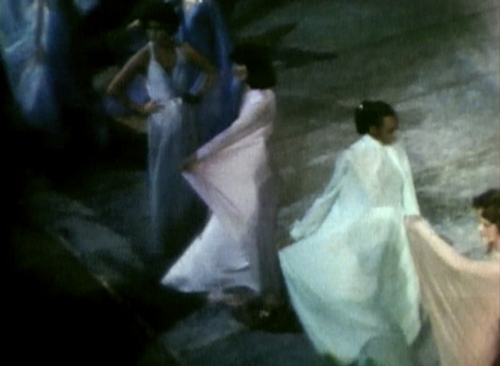Watch the Throne: Made In America

by Elias Tezapsidis
The Battle of Versailles: The Night American Fashion Stumbled into the Spotlight and Made History,
by Robin Givhan,
Flatiron Books, 320 pp.
Fashion critic Robin Givhan’s new book (out this week from Flatiron Books) takes us to The Battle of Versailles Fashion Show, a fundraising event hosted on November 28, 1973 with the intention of restoring the Parisian palace. The event took the form of a face-off between five French fashion houses (Yves Saint Laurent, Emanuel Ungaro, Pierre Cardin, Hubert de Givenchy, and Christian Dior) and five American (Oscar de la Renta, Bill Blass, Halston, Anne Klein, and Stephen Burrows) and yielded an unexpected result: by introducing a fresh notion of fashion that functioned as a means of escapism in a somewhat toxic world, American designers challenged the absolute power Parisian couturiers had held in defining trends. Another unexpected historicizing aspect: U.S. designers used more racially diverse models than had been seen previously on the European runway, showing how fashion can push forward political messages and generate critical discourse.
In the 1970s, the upper crust served as the primary muses of the French designers. In the U.S., however, “style was a distraction and a source of commonality in an increasingly fractured world,” writes Givhan. Coming from a much humbler milieu than affluent socialites, it was Eleanor Lambert’s perseverance and drive as the event’s planner that greatly contributed to the event’s success. She knew how to navigate the uptown crowds in a way that brought positive attention to the artistic acquaintances she had acquired from her upbringing, and was able to compile an impressive guest list with all the society names.
The Battle of Versailles, as an event, is recognized as a central point in the smooth progression of American fashion. On that night in 1973, its victory over the Parisian tradition was apparent: American fashion seemed much more ambitious, the black models became a sensation and there was an element of inexplicable magic. Liza Minnelli performed, introducing the American portion of the show, and from that moment on the absolute American triumph was clear to all attendees.
Throughout The Battle of Versailles, Givhan supplies cameos and quotes from the most recognizable names in fashion and culture at large—not surprising, coming from the first fashion critic to receive a Pulitzer Prize for her work in the field. Especially generous quotes in length and detail come from Donna Karan, who was then an assistant to Anne Klein. Givhan methodically crafts accounts so they serve to clearly demonstrate how one single night became the beginning of a new reality for fashion.
“I remember the vibe, I don’t remember the people,” Battle of Versailles model and diversity activist Bethann Hardison recounts. “At one point, I remember dancing, closing my eyes, and saying ‘If I die tomorrow, I’d be fine, because I’m so happy.’”
The underground scene today feels altogether differently framed, treated, and achieved. For the information generation, one underground is already someone else’s mainstream, the idols on the other side only a swipe away. The problems and triumphs of accessibility hold true in sartorial matters, too. In a post-internet age, one might argue, fashion can only resemble that euphoric rush of excitement an audience member would experience from indulging in the hype, rather than embody it. In recent memory (F/W ’15), the most distinctly hyped New York underground is found at the party-shows created by Hood By Air. To some, the clothes have become almost irrelevant when speaking about the new streetwear and streetwear-inspired, and from that perspective what HBA has done is pretty groundbreaking. If you rolled once or thrice at a GHE20G0TH1K party before Venus X decided Rihanna stole her personal brand, you know that any hyped design owes much of its freshness to its constituents.
Givhan shows that American fashion’s contemporary position owes much to the constituents that represented it in the Battle of Versailles, too. She provides biographical notes for all models that were chosen, honoring the role they played in politicizing a certain moment. She also pays extensive homage to Stephen Burrows for his gift in bringing street-cool on the runway: “in modern terms, Alexander Wang, Hedi Slimane and Nicolas Ghesquière all rolled into one.” Through the intimate descriptions Donna Karan provides of Anne Klein’s excellent work ethic and bordering “secretive and paranoid” behavior, we see another version of the cultural awareness necessary for success in marketing. Using Rick Owens as a closing paradigm for designers defying traditional notions of what is beautiful and elegant, Givhan sets her story to a timeless tune, emphasizing most of all the confidence in beauty “in our own way.”
A version of this essay was first published at V Magazine.
About the Author:

Elias grew up in Thessaloniki, Greece, prior to attending Macalester College in Saint Paul, Minnesota. It was there that he discovered he was too neurotic and OCD for the Midwest and had a low-tolerance for the MN-nice. The move to NYC post-graduation seemed like the logical next step, and since then downtown New York has been home.









